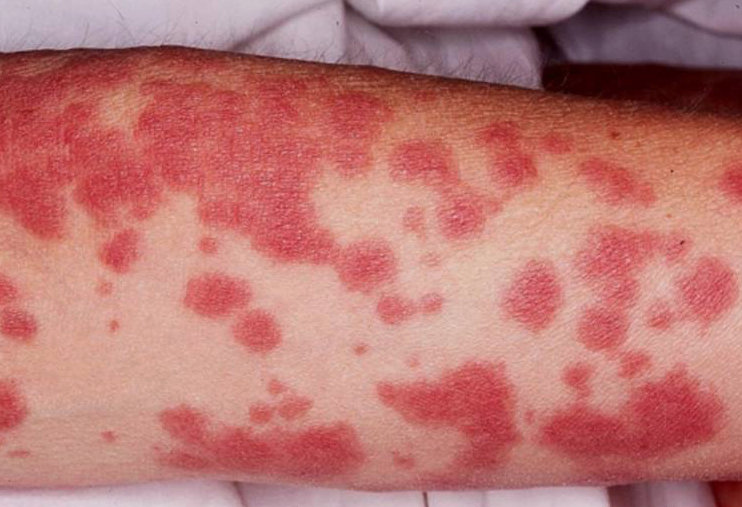DRESS: Rare but serious skin reaction with Zyprexa (Olanzapine)

Last Updated on May 11, 2016 by Joseph Gut – thasso
May 11, 2016 – We do learn from a very recent Drug Safety Communication (DSC) by the American Food & Drug Administration (FDA) that olanzapine, the pharmacologically active component in Zyprexa, Zyprexa Zydis, Zyprexa Relprevv, Symbyax, and olanzapine generics may cause the rare, but very serious skin condition called Drug Reaction with Eosinophilia and Systemic Symptoms (DRESS), which in some patients may be fatal. Olanzapine-containig medicines are antipsychotic medicine used to treat the mental health disorders schizophrenia and bipolar disorder. They can decrease hallucinations, in which people hear or see things that do not exist, and other psychotic symptoms such as disorganized thinking.

The current DSC tells us that a search of the FDA Adverse Event Reporting System (FAERS) database identified 23 cases of DRESS reported with olanzapine worldwide since 1996, when the first olanzapine-containing product was approved. FAERS includes only reports submitted to FDA, so there are likely to be additional cases about which FDA is unaware. One patient taking olanzapine experienced DRESS and died; however, this patient was taking multiple medicines that could also have contributed to death.
DRESS may start as a rash that can spread to all parts of the body. It can include fever and swollen lymph nodes and a swollen face. It causes a higher-than-normal number of infection-fighting white blood cells called eosinophils that can cause inflammation, or swelling. DRESS can result in injury to organs including the liver, kidneys, lungs, heart, or pancreas, and can lead to death. DRESS is a potentially fatal drug reaction with a mortality rate of up to 10%.
In any case, patients taking olanzapine-containing products who develop a fever with a rash and swollen lymph glands, or swelling in the face, should seek medical care right away. The combined symptoms together are commonly seen in DRESS. Talk with your health care professional about any questions or concerns. Do not stop taking olanzapine or change your dose without first talking with your health care professional. Sudden stopping of the medicine can be harmful without your health care professional’s direct supervision.
Likewise, health care professionals should immediately stop treatment with olanzapine if DRESS is suspected. There is currently no specific treatment for DRESS. The important ways to manage DRESS are early recognition of the syndrome, discontinuation of the offending agent as soon as possible, and supportive care. Treatment with systemic corticosteroids should be considered in cases with extensive organ involvement. When prescribing the medicine, explain the signs and symptoms of severe skin reactions to your patients and tell them when to seek immediate medical care.

